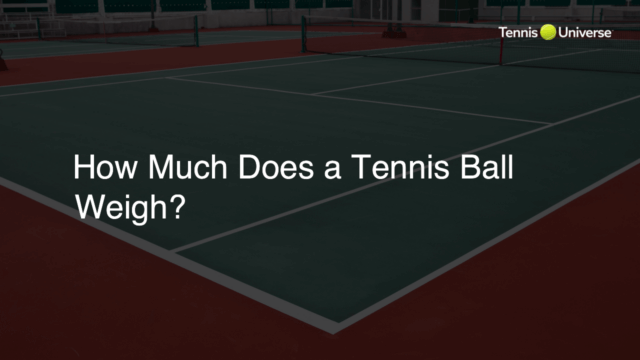In a tennis tournament, the number of rounds typically depends on the total number of players participating. Generally, there are 7 rounds in major tournaments like Grand Slams, featuring 128 players, while smaller tournaments with 64 and 32 players have 6 and 5 rounds, respectively. However, there can be some variations due to qualifications, byes, or double-elimination formats.
Understanding the Rounds in a Tennis Tournament
In a tennis tournament, the number of rounds depends on the total number of players participating. In this article, we will discuss various tournament formats and the number of rounds you can expect for each type.
Grand Slam Tournaments
For major tennis events such as the Grand Slam tournaments, featuring 128 players, there are 7 rounds in total. These top-tier events consist of the Australian Open, the French Open, Wimbledon, and the US Open.
ATP 1000, 500, and 250 Series Tournaments
The non-Grand Slam competitions, which are part of the ATP 1000, 500, and 250 Series, vary in the number of rounds based on player entries. For instance:
ATP 1000 Series
Typically consists of 6 rounds, with 64 participating players.
ATP 500 Series
May feature between 5 and 6 rounds, as these tournaments can have 32 or 48 participating players.
ATP 250 Series
Usually includes 5 rounds with a 32-player draw.
Qualifying Rounds and Byes
In many tennis tournaments, there may be qualifying rounds before the main event, where lower-ranked players compete to enter the main draw. Additionally, byes may be awarded to top-seeded players, allowing them to skip the first round, which may affect the total number of rounds played for some individuals.
Challengers and Futures Events
At the lower-tier Challenger and Futures tournaments, the number of rounds may be fewer, ranging from 3 to 5 rounds. These events host fewer players, and the level of competition differs from major events.
Picking the Right Tennis Racket
As you watch your favorite tennis players or participate in tournaments yourself, it is essential to choose the appropriate tennis racket for your skill level and style of play. With a suitable racket, you will be able to improve your performance and possibly advance through multiple rounds of a tennis tournament.
Doubles Tournaments
In addition to singles events, tennis tournaments often feature doubles events where pairs of players compete against each other. The number of rounds in doubles competitions generally follows the same structure as singles, with the total number of participating teams taken into account. However, it is worth noting that doubles draws are usually smaller compared to singles.
Mixed Doubles Tournaments
Mixed doubles events, where male and female players pair up, are generally held at Grand Slam tournaments and some other events. The number of rounds in mixed doubles tournaments is similar to that of doubles, with a smaller draw size.
Team Competitions
Team events like the Davis Cup and the Billie Jean King Cup (formerly Fed Cup) are unique in format, with a mix of singles and doubles matches determining the overall outcome. In some cases, the number of rounds may be fewer or vary due to the round-robin or knockout stages used to determine the winning team.
Tennis Tips for Tournament Preparation
For those seeking to participate in tennis tournaments, it is crucial to be well-prepared mentally and physically. Here are some tennis tips that can help you get ready:
1. Develop a solid practice routine: Regular practice helps you improve your skills and build endurance for the multiple rounds you’ll encounter in a tournament.
2. Work on your fitness: Physical fitness is important in tennis, where agility, speed, and strength often influence the outcomes of matches. Keep a balanced workout regimen that includes aerobic activity, strength training, and flexibility exercises.
3. Mental preparation: Composure and mental toughness are crucial factors in prolonged tennis events, especially when playing multiple rounds. Incorporate techniques like visualization and breathing exercises to help maintain focus and manage stress during tight competition.
Remember, consistency and dedication in your practice sessions are key to unlocking your full potential in tennis tournaments, no matter how many rounds they have.
FAQ Section
In this section, we address common questions and provide concise answers related to the number of rounds in tennis tournaments discussed in this blog post. Gain further insight into the various formats, tips for players, and more in this handy FAQ.
What are the different stages of a Grand Slam tournament?
Grand Slam tournaments have multiple stages, including the main draw, qualifying rounds, doubles, mixed doubles, and junior events. The main draw of singles events consists of 7 rounds with 128 players competing.
How do byes affect the number of rounds a player plays in a tournament?
Byes allow top-seeded players to skip the first round, reducing the number of rounds they play in a tournament. However, the total rounds of the tournament remain unchanged. For example, in an ATP 1000 event with 6 rounds, a player with a bye would play a maximum of 5 rounds if they reach the final.
What is the difference between a draw size and the number of rounds in a tournament?
The draw size refers to the total number of players or teams participating in an event, while the number of rounds is a sequential progression of matches leading to the final match. Each round reduces the number of competitors by half until only two remain for the final round.
Do the number of rounds in singles events differ from doubles or mixed doubles events?
The number of rounds is generally the same for singles, doubles, and mixed doubles events, but the draw sizes are often smaller in doubles and mixed doubles, meaning fewer eliminations and a smaller number of participants.
What are some effective tennis tips for competing in multiple rounds of a tournament?
To perform well in multiple rounds of a tennis tournament, one should focus on regular practice, improving physical fitness, and mental preparation techniques such as visualization and stress management.












